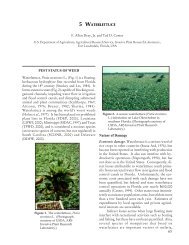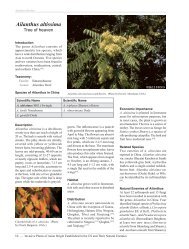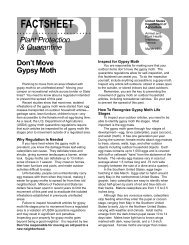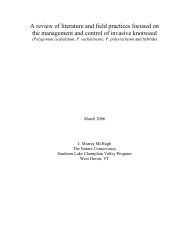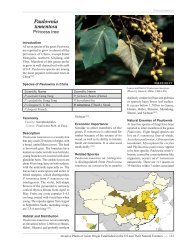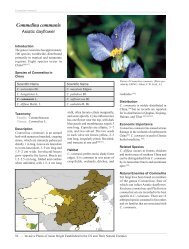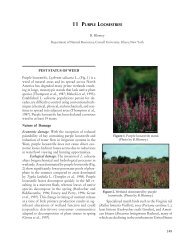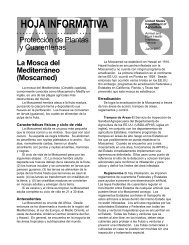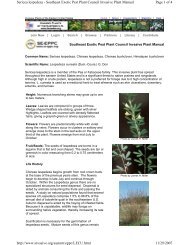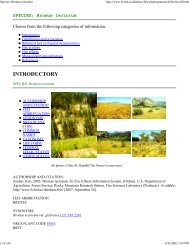A Guide to the Control and Management of Invasive Phragmites [PDF]
A Guide to the Control and Management of Invasive Phragmites [PDF]
A Guide to the Control and Management of Invasive Phragmites [PDF]
You also want an ePaper? Increase the reach of your titles
YUMPU automatically turns print PDFs into web optimized ePapers that Google loves.
underst<strong>and</strong>ing phragmites<br />
control methods<br />
recommended management strategies<br />
fur<strong>the</strong>r information<br />
part 1<br />
part 2<br />
part 3<br />
part 4<br />
25<br />
<strong>Management</strong> Strategy<br />
for large, dense st<strong>and</strong>s <strong>of</strong><br />
phragmites in impoundments<br />
Note:<br />
For small, scattered st<strong>and</strong>s <strong>of</strong> phragmites<br />
within an impoundment, steps<br />
1-5 may not all be necessary. In <strong>the</strong>se<br />
cases, treat with herbicide <strong>and</strong> maintain<br />
water levels throughout <strong>the</strong> next growing<br />
season. Spot treatment with herbicide<br />
may be needed <strong>the</strong> following year.<br />
1. Treat phragmites st<strong>and</strong>s with herbicide in late summer (late August <strong>and</strong><br />
September), followed immediately by flooding <strong>to</strong> a minimum water depth <strong>of</strong><br />
6 inches. (It is not necessary <strong>to</strong> dewater <strong>the</strong> site prior <strong>to</strong> herbicide application.)<br />
2. Allow <strong>the</strong> site <strong>to</strong> remain flooded until <strong>the</strong> next summer, <strong>and</strong> <strong>the</strong>n dewater in late July.<br />
3. Keep <strong>the</strong> site as dry as possible until mid-August, at which time use prescribed fire.<br />
4. Immediately following <strong>the</strong> burn, flood <strong>the</strong> site <strong>to</strong> a minimum water depth <strong>of</strong> 6<br />
inches <strong>and</strong> maintain this water depth for at least one year.<br />
5. Check site <strong>the</strong> following growing season for phragmites regrowth <strong>and</strong> spot-treat<br />
with herbicide if needed.<br />
If prescribed fire is not feasible for a site,<br />
it is recommended that <strong>the</strong> site be<br />
mechanically treated during <strong>the</strong> winter in<br />
a frozen condition <strong>to</strong> remove <strong>the</strong> dead<br />
plants that have persisted from <strong>the</strong><br />
herbicide treatment.


![A Guide to the Control and Management of Invasive Phragmites [PDF]](https://img.yumpu.com/27321025/30/500x640/a-guide-to-the-control-and-management-of-invasive-phragmites-pdf.jpg)

